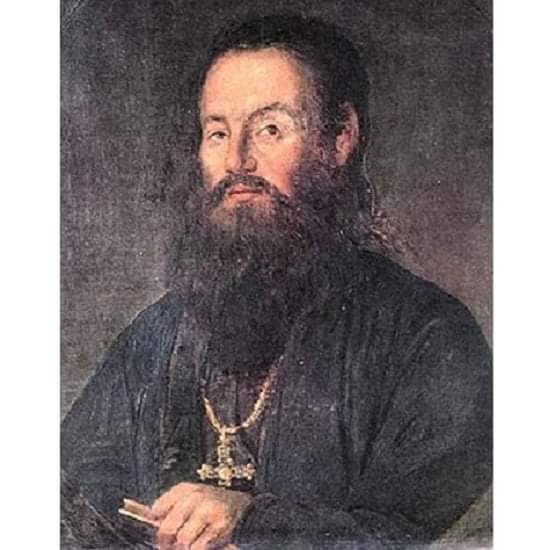Anthimos Gazis (1758 - November 28, 1828)
Athimos Gazis From Millies in Thessaly, he was a Priest, Revolutionary, Cartographer and significant figure in the age of Modern Greek Enlightenment.
After completing his studies in 1774, he became a Deacon. He was sent to local villages in Thessaly where he worked as a Teacher, after this, he served at the Ecumenical Patriarchate of Constantinople, becoming an Archimandrite.
By 1789, he was in Vienna, then home to a flourishing Greek community. By 1796, he was the Priest at the Church of St George in Vienna. Importantly, being outside the areas controlled by Ottomans, ideas of Greek Independence & Nationalism could be freely & openly discussed.
Gazis also devoted time to study Physics, Mathematics & translate literary works. In 1800, he also re-issued & extended a Map of the Hellenic realm, first published by Rigas Feraios (Πίναξ Γεωγραφικός της Ελλάδος).
Gazis was a proponent of education for Greeks in occupied Greece. In 1813, he was instrumental in the founding of “Φιλόμουσος Εταιρεία” in Athens. Its goals were the cultural re-awakening of Greeks, promotion of education in Greece, providing funds & resources for Greeks to be educated, promoting ideas of Greek Revolution & Nationalism and that Greeks can and should rely on their own strength, rather than await foreign assistance.
By 1815, Gazis had opened a 2nd institution in Vienna, before travelling to Odessa in 1817. While there he at first hesitated before finally joining Filiki Etairiea and by 1818, was back in Thessaly, to help lay the groundwork for the Greek Revolution there.
In May 1821, Gazis led a group of revolutionaries in sieges against the Turks across south-eastern Thessaly. Gazis was recognised as a leader, officially representing the Magnesia region of Thessaly at the First National Assembly of Epidaurus (1821) & at the Second National Assembly at Astros (1823).
Between 1823-25 he was in the Peloponnese, providing logistical support to Greek rebels and obstructing Turkish efforts to send supplies and re-enforcements there. While also continuing to work in national commissions regarding the promotion of education.
In 1827 he falls ill and retires to Tinos and then Syros, where he died in 1828.

